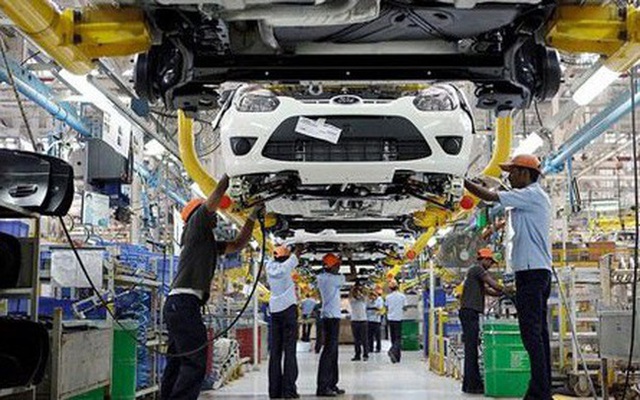Auto localization ratio to be abolished
VGP - The regulations on the automobile localization ratio shall be rescinded from October 10, after they have been in force for almost 20 years.

From October 1, 2022, all regulations on auto localization ratio shall be removed - IIllustration photo
This is part of Circular No. 11/2022/TT-BKHCN, dated August 12, 2022 on removal of calculating methods of the automobile localization ratio as stipulated in Decision No. 28/2004, Decision No. 05/ 2005 and Circular 05/2012.
Outdated rules
Under current regulations, Viet Nam calculates the localization rate by clusters of details produced in the country.
Meanwhile, other countries calculate this as a percentage of domestic production value.
This makes it difficult for businesses to enjoy the preferential import tax rate of zero percent if the localization rate within the bloc, as with ASEAN, is 40 percent.
Regarding the discrete level of imported auto parts, components must come in clusters, accompanied by many different details.
Viet Nam's automobile industry remains a fledgling one after more than 30 years since the country opened its door to foreign investment.
The current average localization rate of passenger cars with up to nine seats is as low as 7-10 percent, according to data released by Deputy Minister of Industry and Trade Do Thang Hai last August. The government target is 30-40 percent by 2020, 40-45 percent by 2025 and 50-55 percent by 2030.
The current localization rate is now 40-50 percent for trucks, and 55 percent for buses, according to the MoIT.
Therefore, the regulations related to methods of determining the localization rate were no longer relevant.
Benefits
The removal of those regulations would help improve the investment environment and allow domestic automobile manufacturers to maintain production in competition with completely-built-up (CBU) cars imported from ASEAN countries with a tax rate of zero percent from 2018.
It was really difficult to produce high-quality automobiles with the current localization ratio regulations. Some important parts of the cars were underestimated, while others were highly valued. The adjustment to the auto localization rate calculations will create driving forces for the manufacturers to improve their product quality with the most advanced technology.
The localization rate of passenger cars in Viet Nam is still quite low due to the slow development of auto parts and accessories suppliers, in terms of both quantity and quality. Only a few domestic suppliers can get involved in the supply chains of automobile manufacturers in Viet Nam.
Vietnamese enterprises have been left behind in the race for high-quality auto parts and accessories due to their low speed of technological innovation.
Many auto parts suppliers still have little capability and production technology to get involved in the value chains of the domestic automotive industry.
Over the past 10 years, Viet Nam has signed a series of free trade agreements (FTAs) such as the ASEAN Trade in Goods Agreement, the Comprehensive and Progressive Agreement for Trans-Pacific Partnership, and the EU–Vietnam Free Trade Agreement.
These agreements require member states to commit to the removal of tariff barriers for imported cars and auto parts./.
